Medical Service
Overview
In this part, we will give you a detailed look on the current situation of hospitals and medical service in China. We will point out the problems of medical service in China, the difficulties for the public to get medical help and the development of medical appliance.
Hospitals now face the serious problem of imbalance between those in big cities and in villages and countryside. That is, while most public hospitals in cities are being more and more crowded, it’s more and more difficult for hospitals in villages to keep running.
As for the public to see a doctor, we found that most Chinese feel it hard and expensive to see a doctor. But for medical appliances, it’s amazing that the situation is better than that of hospitals and medical service.
Based on the messages mentioned above, we came up with our project, a biosensor for detecting diseases, in the hope of helping the public to find early symptoms of certain disease and to get early diagnosis. The biosensor we made could be used at home, that is, people do not need to go to the hospital, waiting in a line, spend a lot of money to know their state of health.
Current Situation of Hospitals in China
Current Situation of Public Hospitals
Public hospitals in China can be divided into two parts: the municipal ones and those at grass-roots level. Among most people’s concept, municipal hospitals are much better than grass-level ones and thus they are more willing to go there.
Municipal hospitals always have better conditions for treatment and sanitation. Doctors there are of higher academic levels and they usually have rich experiences on their specific field [3]. Consequently, most people tend to go there to get medical help.
As for hospitals at grass-roots level, however, it has even become a serious problem to prevent the number of them from declining. Most of these hospitals in cities own the same features: small-scaled rooms, lack of funds, poor sanitation conditions and fewer doctors of high academic levels [1].
Even though hospitals at grass-roots level have many problems, we must admit that these hospitals are the major ones in China and many areas can only relies on them. Actually, many villages only have the ability to establish grass-rooted hospitals, and there are still 10.6% of all don’t even have countryside doctors. [3].
Current Situation of hospitals at Grass-root Level in Chongqing
To give a vivid look at these grass-rooted ones, we focused on one city, Chongqing, which is one of the four municipality directly under the Central Government. (The other three is Beijing, Shanghai and Tianjing.)
Let us see the enormous gaps of doctor’s education level between large public hospitals in cities and grass-rooted ones.
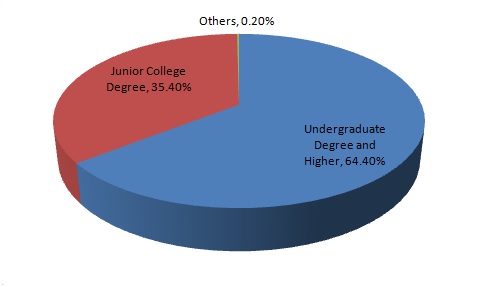
Figure 1. Doctor's Degree of Community Medical Service Center in Cities [4]
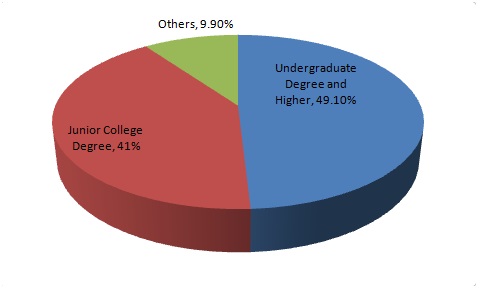
Figure 2. Doctor's Degree of Community Medical Service Center in Towns [4]
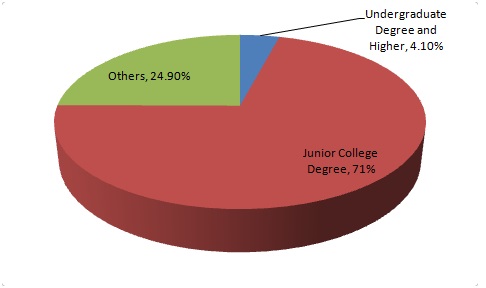
Figure 3. Doctor's Degree of Community Medical Service Center in Villages [4]
From these graphs above we can see that community medical service center get the best medical education level, whereas doctors working in villages get the lowest level. So we can draw the conclusion that government hasn’t attached enough importance to education of medical workers at grass-root level as it ought to do.
Current Situation of Non-public hospitals in China
Non-public hospitals are even worse comparing to public hospitals. The speed of non-public medical industry agglomeration is slow and the scale of that is small (Wei F. et al., 2015). The agglomeration degree of economy has greater impact than that of non-public hospitals, that is, in most developed areas, non-public hospitals are often at larger scales. However, except for a few provinces, there are most other regions that the agglomeration degree and scale of non-public hospitals is far lower than that of public hospitals. There are more comprehensive hospitals in non-public hospitals in China, and specialized hospitals gather greater in developed areas [2].
These two pictures below show the strong linkages between economy and number of non-public hospitals. Nevertheless, we must admit that these highly developed areas only consist of a small part in China, and it certainly cannot cover most people.
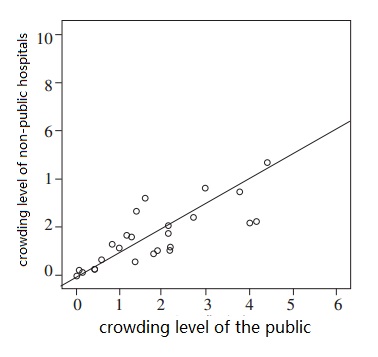
Figure 4. Scatter Graph of Crowding Level of Non-public Hospitals and the Public (Census of China, 2010)
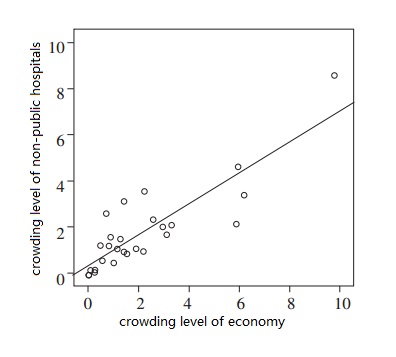
Figure 5. Scatter Graph of Crowding Level of Non-public Hospitals and Economy (Statistic Yearbook of Medical and Health, 2012)
Conclusion
Both public hospitals and non-public hospitals face a lot of difficulties in China. The more developed and wealthy the area is, the more and better the hospitals are. Consequently, many areas, especially backward and remote villages, have only very small clinics or even no doctors, and people there surely cannot get timely and properly treatment. So it’s cruel to build a cheap, convenient detecting instrument which can help them detect the disease. Although it cannot solve the problem radically, it can help more people to detect certain diseases.
Current Situation of people’s hospitalizing in China
China owns for 1.4 billion people, but the medical and health expenses are much fewer than what it ought to be. From 1999 to 2014, the average cost for the public to go to see a doctor had multiplied by 19.75, which is much beyond the increasing speed of income [5]. It not only brought heavy economic burden to enterprises and country, but also made serious economic and social troubles. In China, about 48.9% of the public do not go to the hospital when they are ill, and the proportion of people who refuse to be in hospital as they need is 29.6% [5].
Simultaneously, it has become harder to tolerant the unfair treatment in medical and health field. According to the assessment list made by WHO in 2000 about medical and health of 191 countries, China only ranked No.144 of the list. In the assessment of funding and distribution justice, China only listed No.188, the last but three [5].
All the data show that the backward of medical and health has become a threshold to China’s striding forward. This situation goes far beyond the economic development and China’s nature. How to decrease the cost, together with how to make it more convenient for people to get medical treatment, remains a big challenge.
Current Situation of Medical Appliances in China
We are happy to announce that medical appliances enhance a brighter environment than we think of. Up to 2013, China already has 15961 medical appliance institutions in total. Every province owns some institutions and they are all approved by China Food and Drug Administration (CFDA) except for those in Hainan Province [6].
However, like hospitals in China, medical institutions also rely much on the economy development. As the analysis told, these institutions mainly located in five provinces: Jiangsu, Guangdong, Beijing, Zhejiang and Shandong Province. Enterprises in these five areas attribute for 60% of total enterprises in China [6].
From the figure below, we can see that there are approximately 15~20 medical appliance institutions be authorized every year from 2004 to 2014. This data gives us the signal that Chinese medical appliances are developing slowly, which means we do not need to worry about the future of our project.

Figure 6. The number of Medical Appliance Institutions Being Authorized in the Last 10 Years [6]
Reference
[1] Zhen C., et al. Current Situation of Public Hospital at Grass-roots level and Countermeasures in Health Care Reform, Contemporary Medicine. 2016, Vol.22 No.13 Issue No.420
[2] Wei Feng-qing et al. Agglomeration Degree Evaluation of the Development Status of Non-public Hospitals in China, Chinese Hospital Management. 2015, 35(2): 9-12
[3] Proposals on Deepening the Reform of Medical System. General Office of the State Council of the People's Republic of China, 2009
[4] Chen J. et al. Current Situations of Grass-rooted Medical Treatment in Chongqing and Its Revelation on Medical Education in China. Chinese Higher Medical Education, 2016.06.013
[5] Green Paper: Social Security for 2014, Research Center for Labor and Social Security (CASS), 2014
[6] Li Y. et al. Study on Institutions of Medical Appliances and Their Present State. Capital Medicine, 1005-8257(2014)12-0004-03




